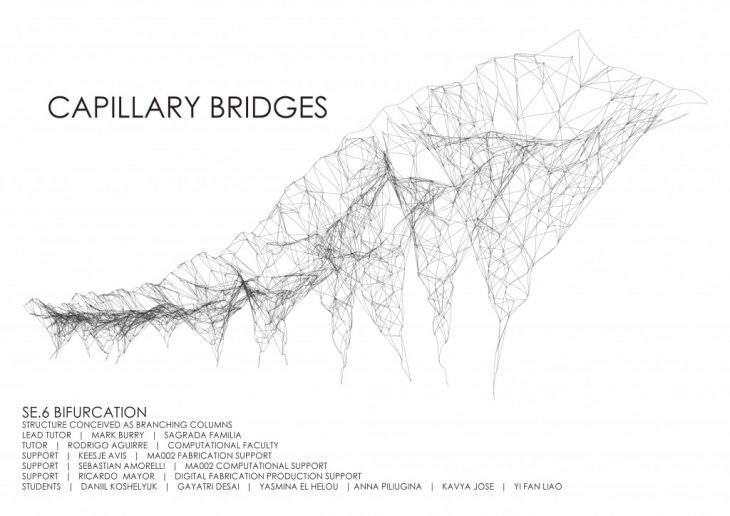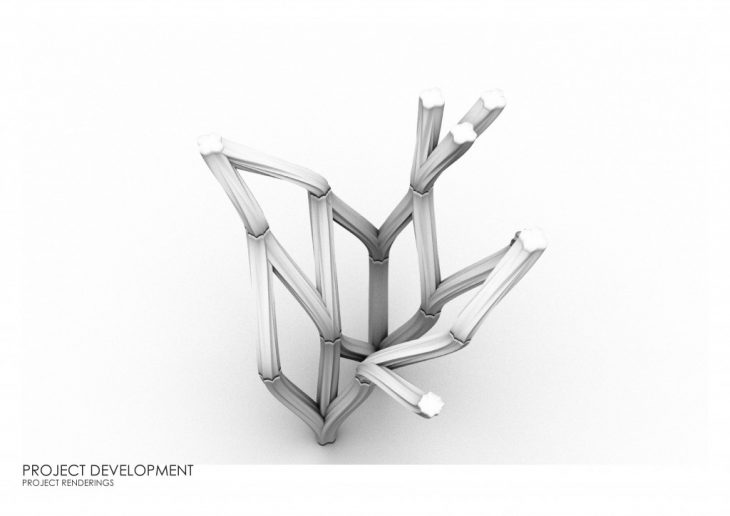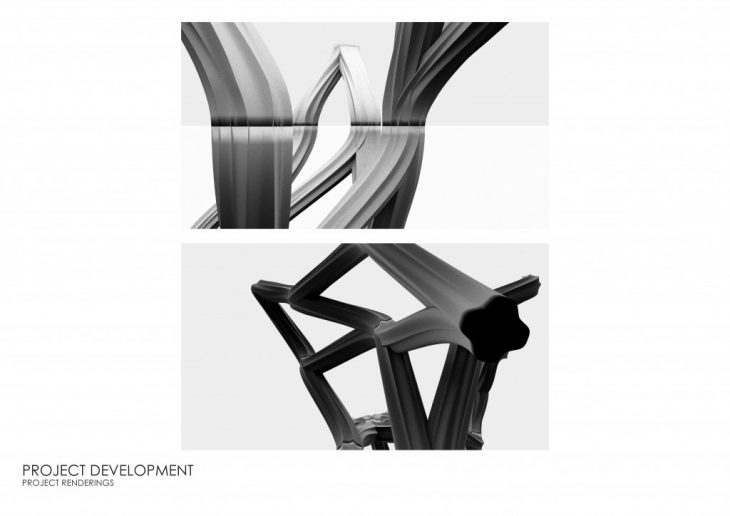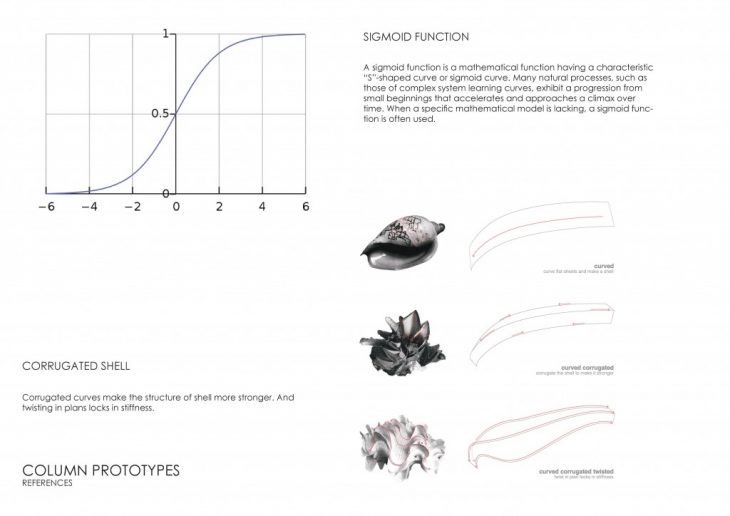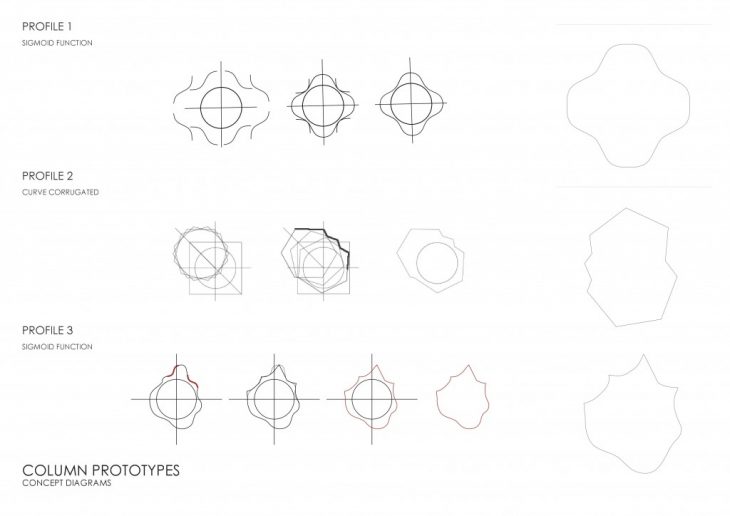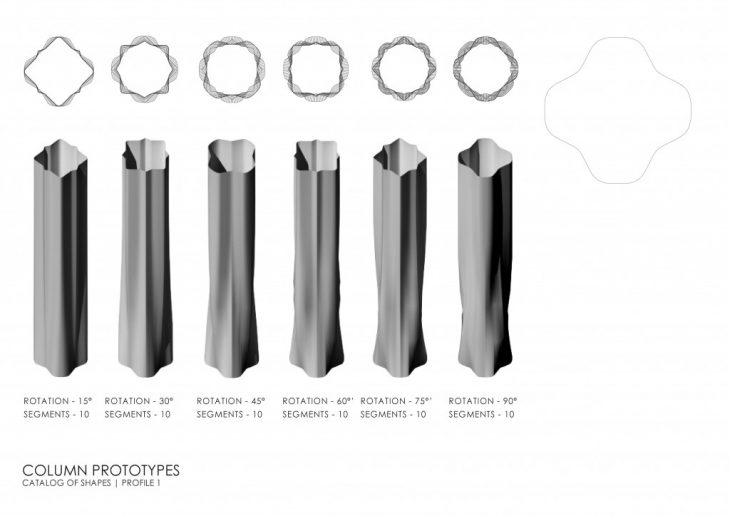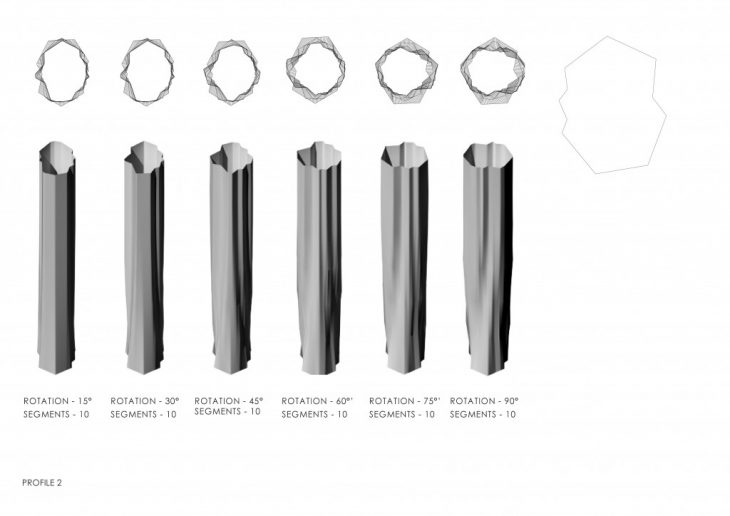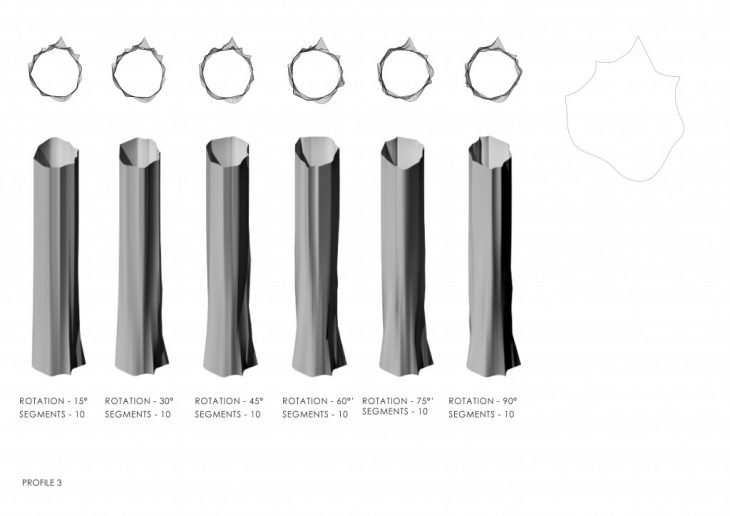The Bifurcation seminar aimed to reinterpret Gaudi’s columns and generate a potentially underlying geometrical guide along with a branching system to join the columns together with the trunk. The 3-day workshop majorly involved simultaneous digital and physical interface where we designed using parametric computation and implemented through hand-made mold making techniques.
References:
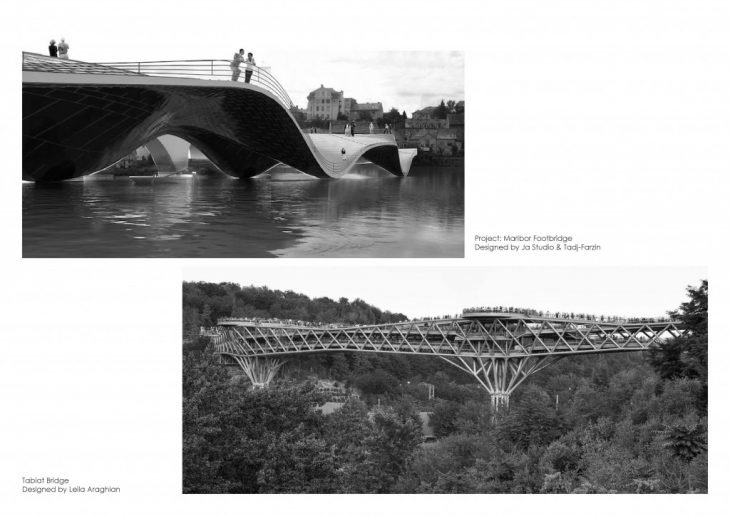
Concept Diagrams: 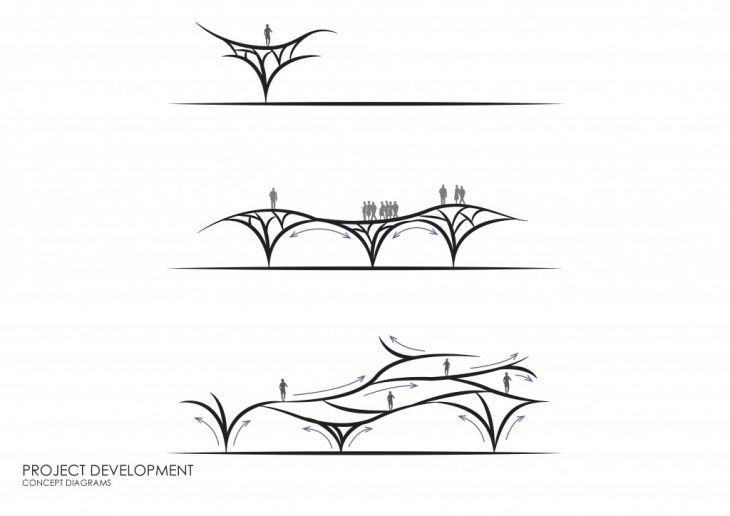
The vision for this project was to create a bridge structure facilitating various public functions and activities. For the same reason, apart from the traditional vertical branching approaches, we also looked into horizontal bifurcation approaches to find its use in spanning across the bridge structures. This approach would also help in creating interstitial pockets and various levels to design integrated but designated public spaces. Additionally, gradual transition from horizontal elements back to vertical sources can allow better optimized force load distribution.
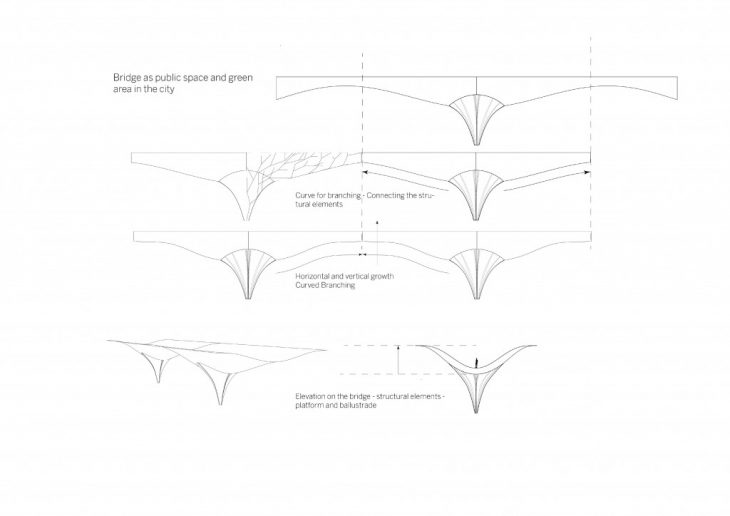
Architectural application: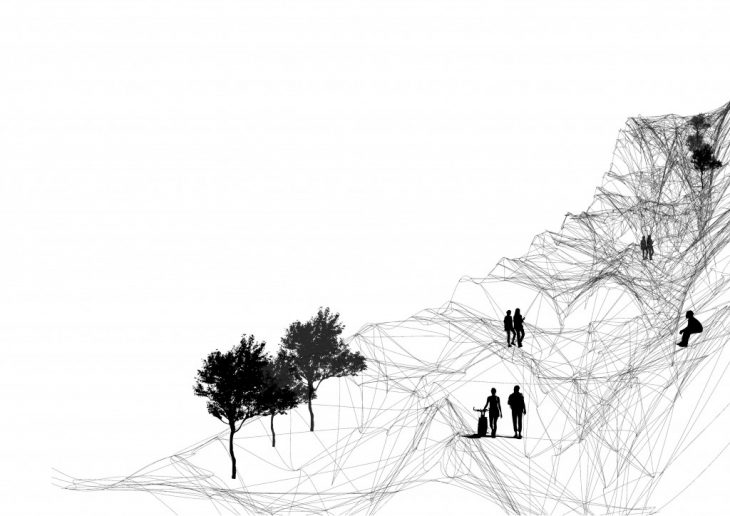
Bifurcation system:
To address the issue we approached the system in a reverse manner. First of all, we generate the surface we want to achieve as a result. Then we proceed by populating it with future nodes. Finally, we create connections based on proximity, direction and intended complexity.
Profile studies:
In terms of profile experiments, we tried to maximize amount of variety in our selected profiles: curved and angular shapes, equal and unbalanced rotation angles, symmetrical and shifted from center profiles.
Fabrication workshop: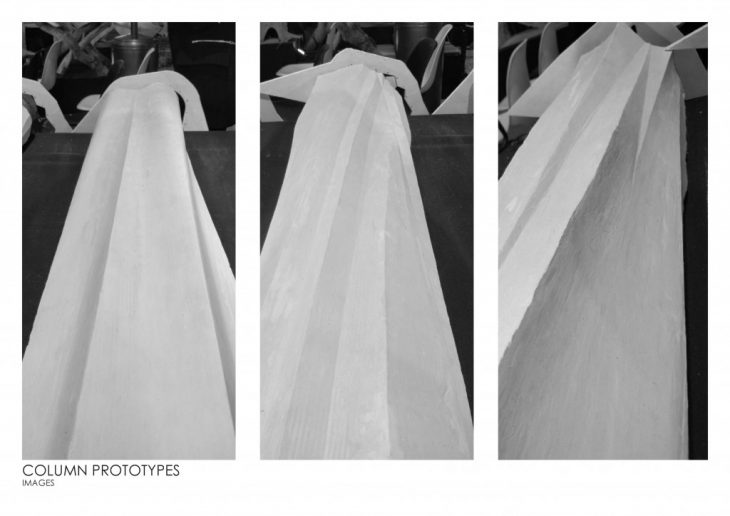
3D printed prototype:
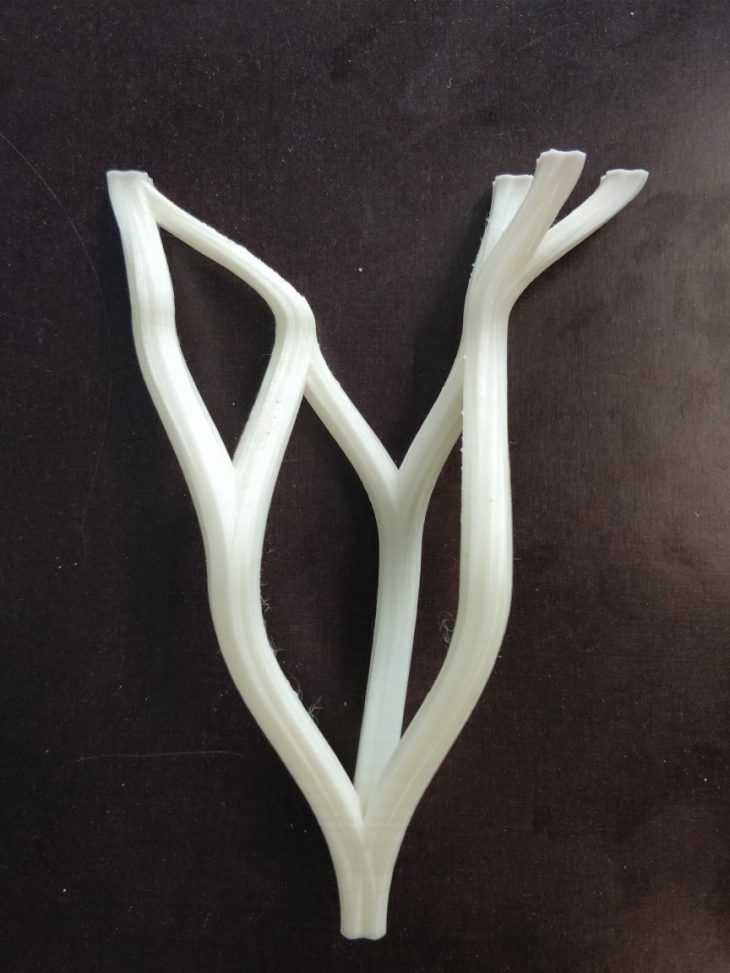
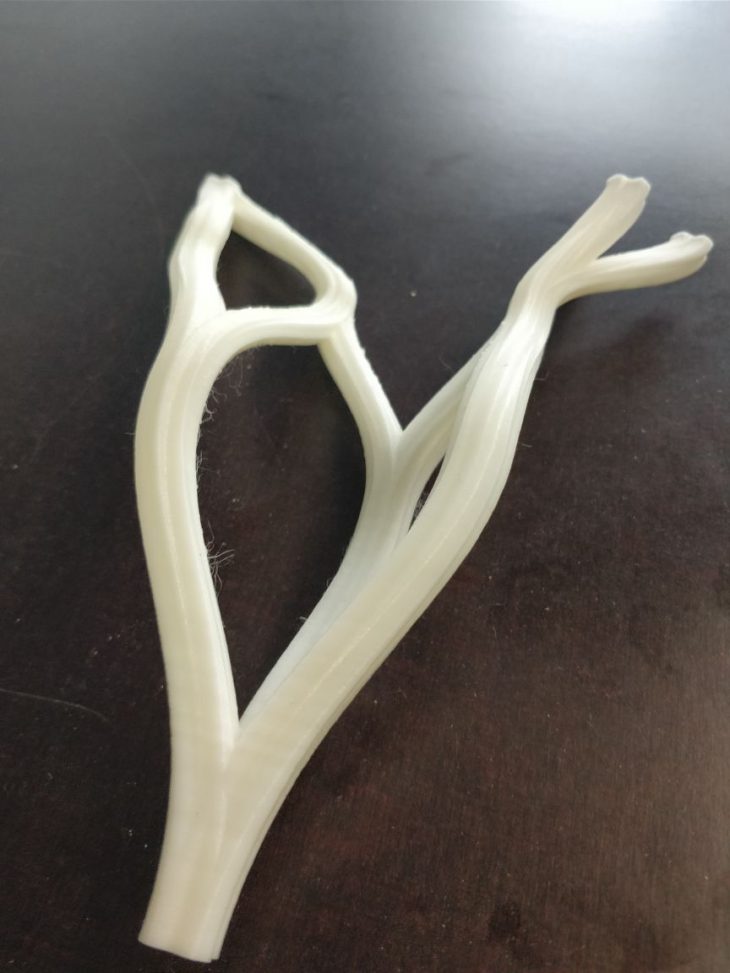
Conclusion:
In conclusion, he course is incredibly rich and balanced with combination of first-hand experience, hands-on experiment and informed theorizing. Thus, we were able to produce described very flexible branching and section system. The aim of gradually shifting from a point-like vertical load-bearing element to a surface allows a wide variety of implementations from temporary structures to a new urban typologies. Simple but indescribably various fabrication methodology of construction does however require further adaptation to proposed branching method. Further more, the development also includes more ordered and controlled branch generation.
Capillary Bridges is a project of IAAC, Institute of Advanced Architecture of Catalonia, developed as part of the Bifurcation course at the Master in Advanced Architecture program in 2017/18 by
Students: Kavya Jose, Yifan Liao, Yasmina El Helou, Anna Piliugina, Gayatri Harikrishana Desai, Daniil Koshelyuk
Tutors: Mark Burry, Rodrigo Aguirre
Support: Keesje Avis, Sebastian Amorelli, Ricardo Mayor
